
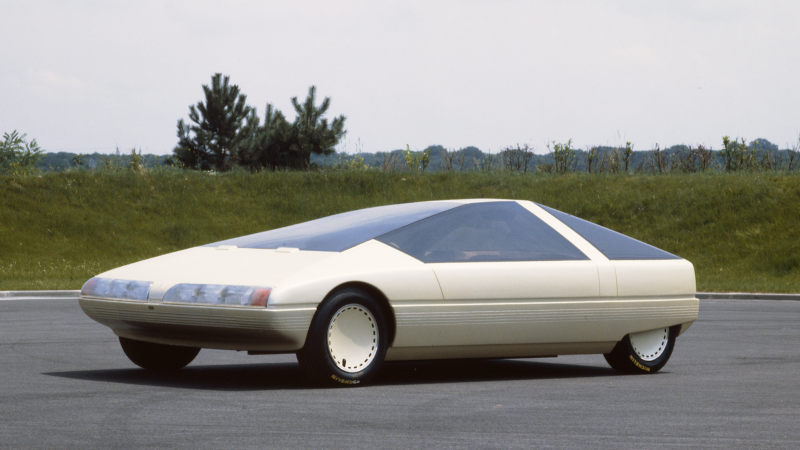
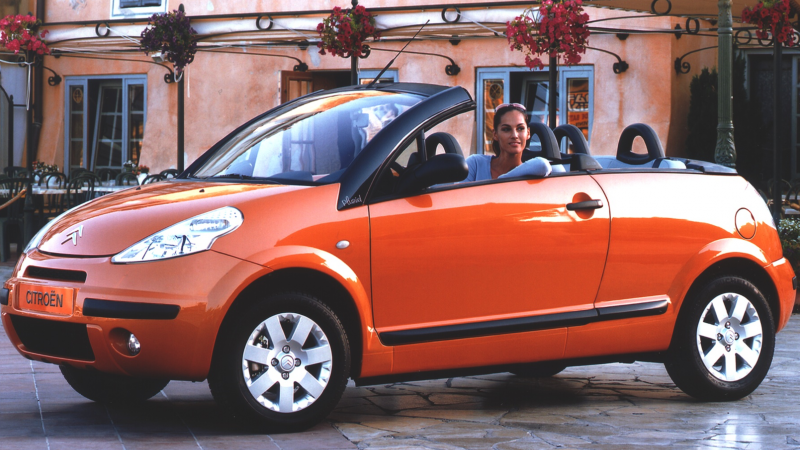
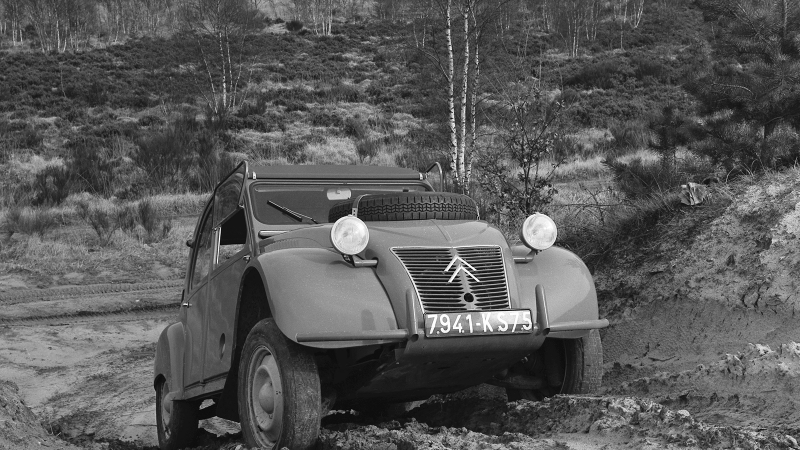
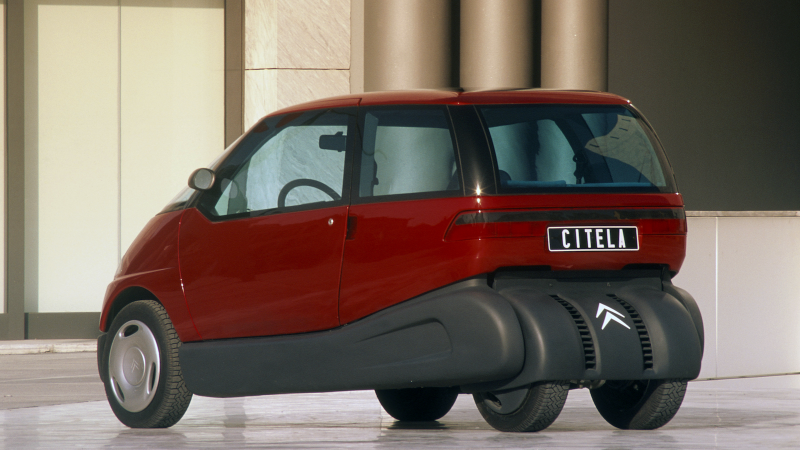
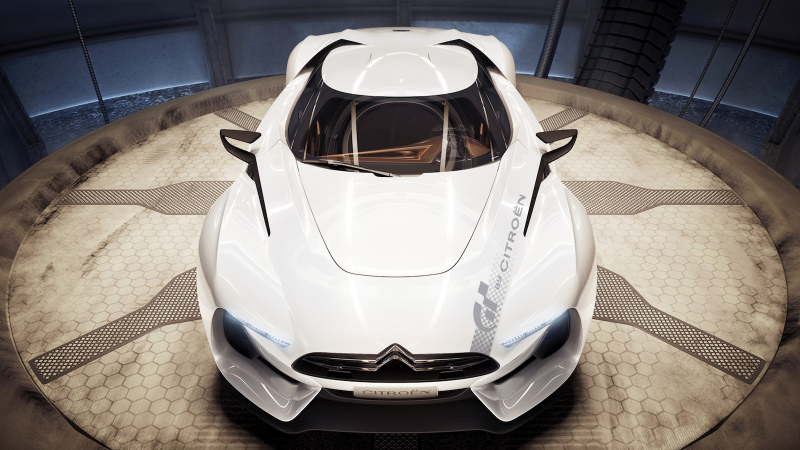
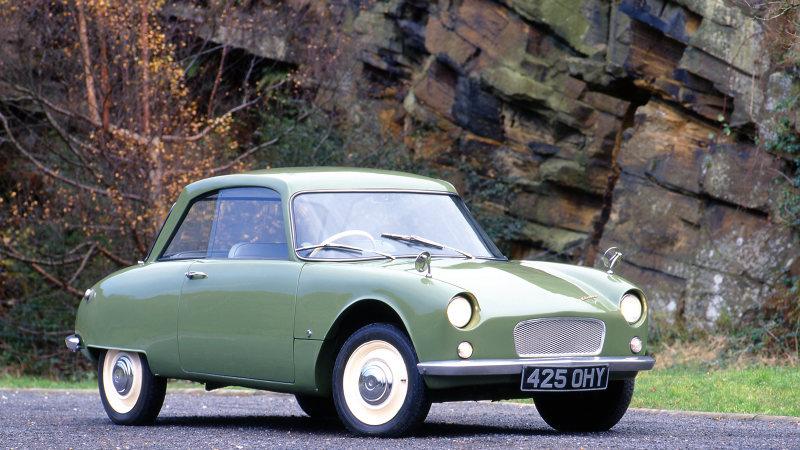
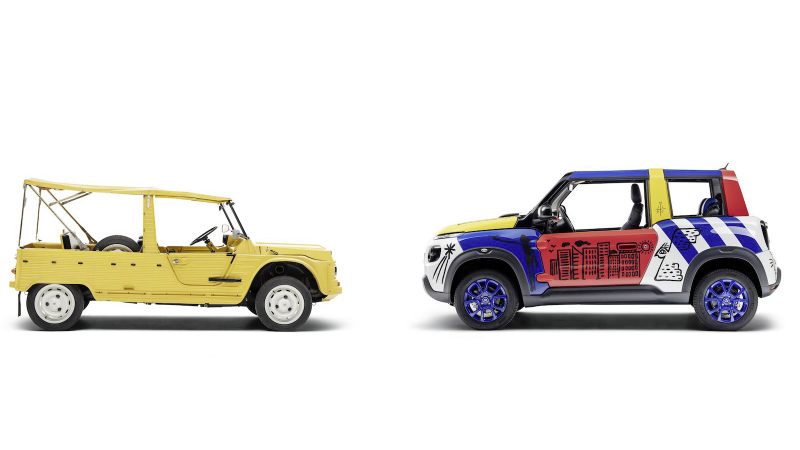
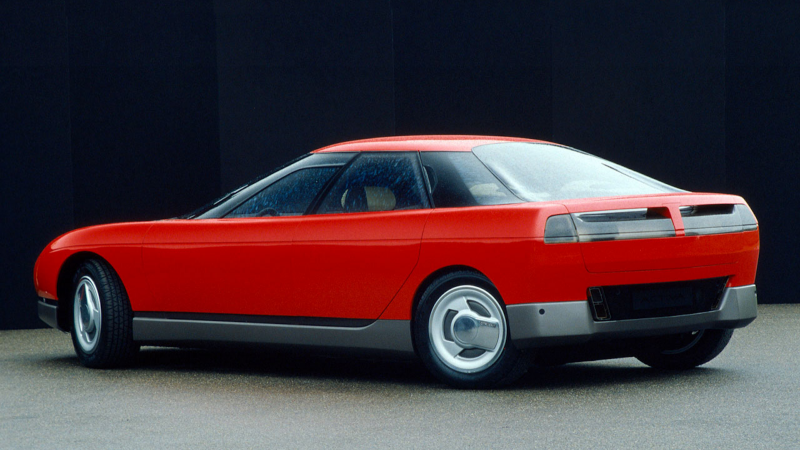
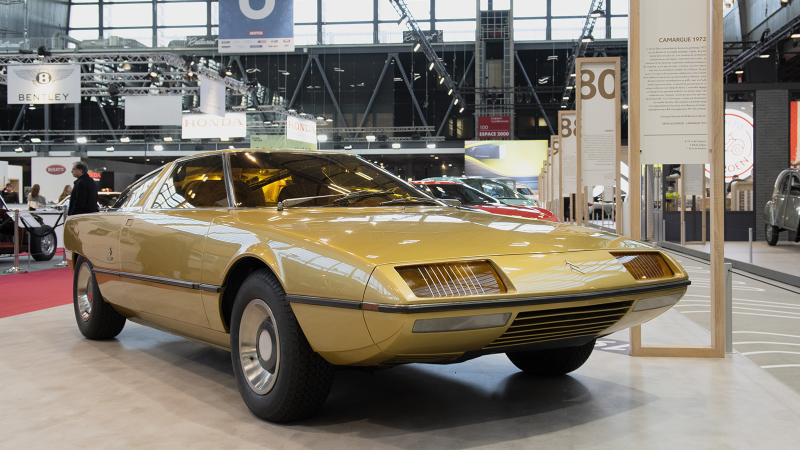
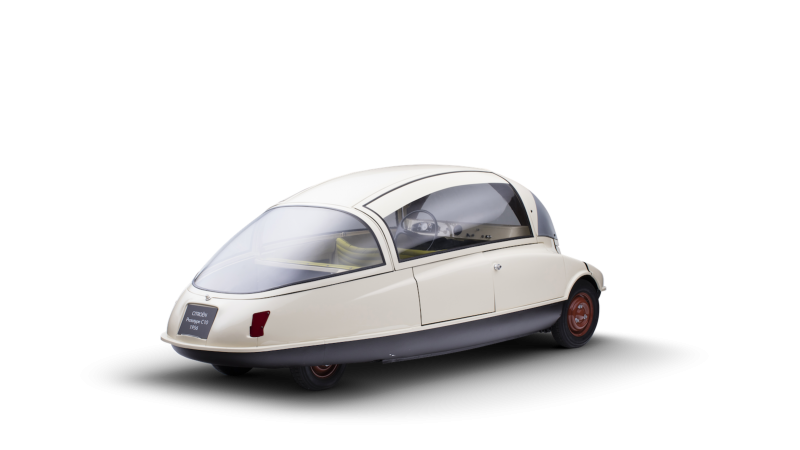

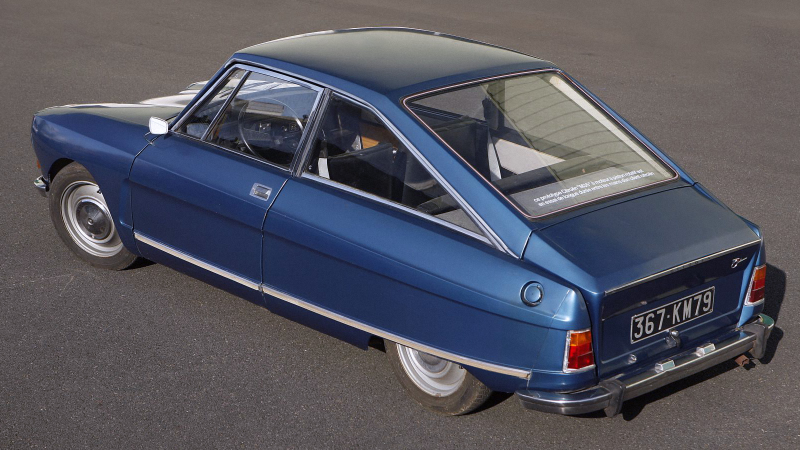
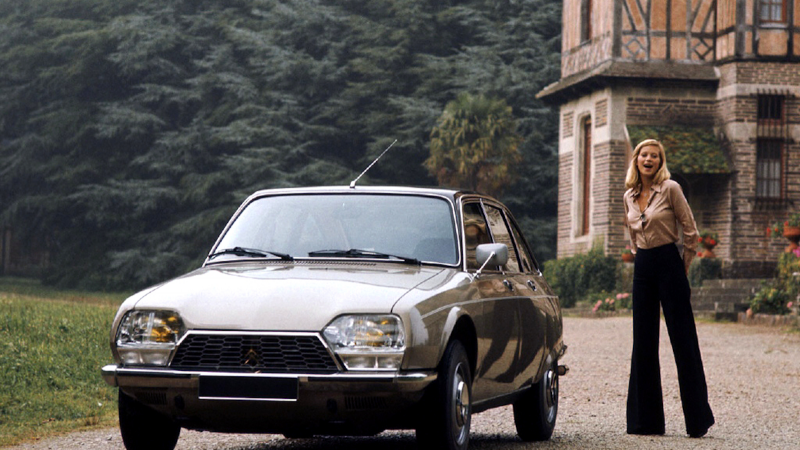
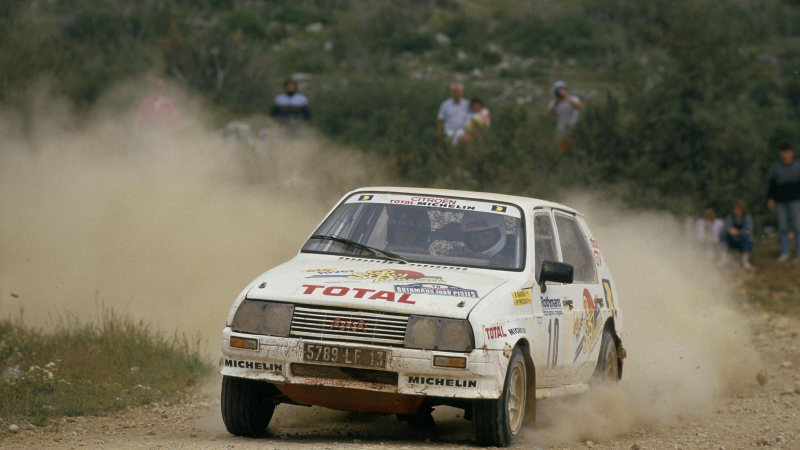
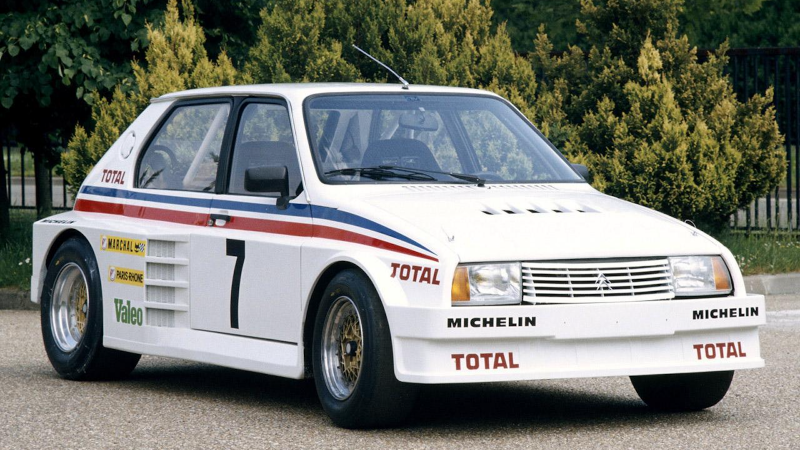

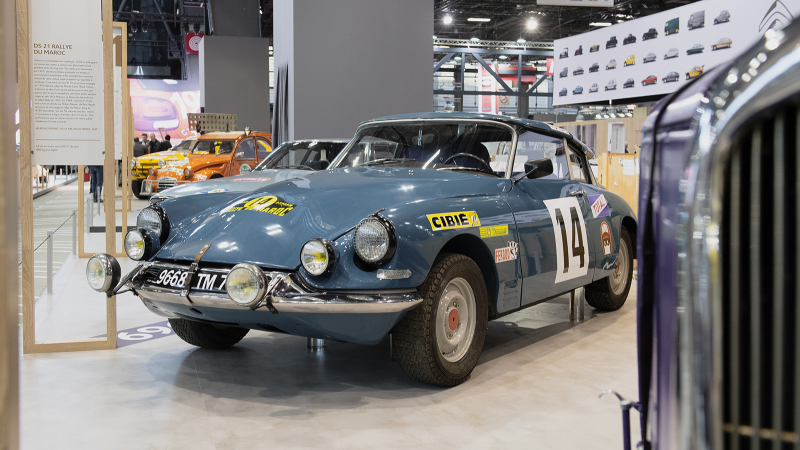
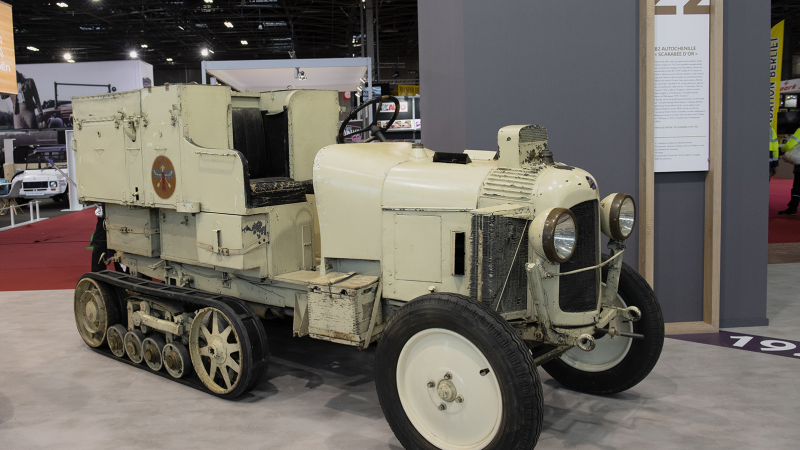
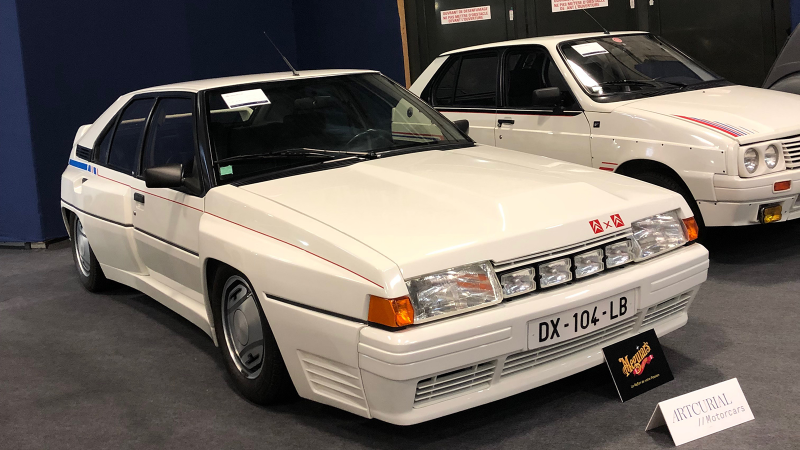
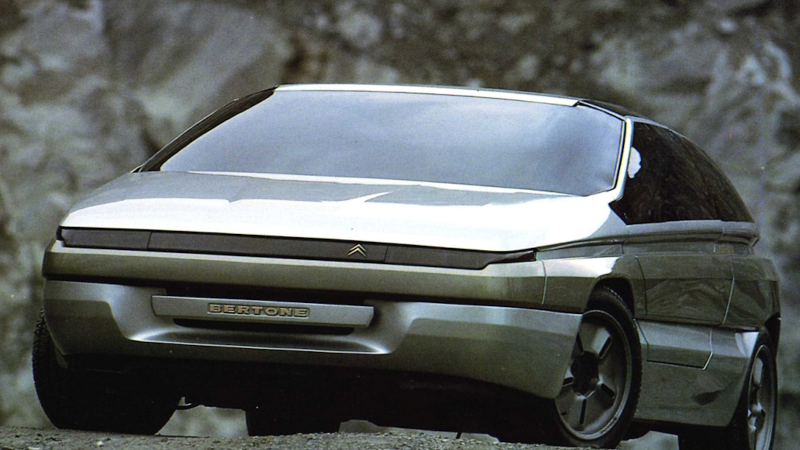
Gallic flair at its most eccentric
Citroën celebrates a century in the car business this month, and the French marque has packed plenty into those 100 years.
Since its birth in 1919 it’s veered from boom to bust and back again, produced icons such as the Traction Avant, 2CV and DS, and frequently pushed the boundaries of design and technology.
We’ve already counted down the brand’s most important milestone cars here, but what about the many oddities that have worn the double-chevron badge?
Read on for our list of the 20 strangest Citroëns ever created…
1. Citroën Karin
Newly under Peugeot’s control and short of new metal to draw people to its 1980 Paris Salon stand, Citroën came up with this bizarre pyramid-shaped, front-wheel drive sub-supercar.
Featuring more glazing than a conservatory showroom it offered seating for three with the driver placed dead-centre, as in Mclaren’s later F1.
2. Citroën C3 Pluriel
Jacques of all trades and master of none, the C3 supermini-based Pluriel’s folding roof and removable side rails meant it could be a hatch, landaulet, full convertible and even a pick up.
But the roof leaked and broke, there was nowhere to store the rails and the plasticky dash had more rattles than a 1950s football terrace. Interesting concept; awful execution.
3. Citroën 2CV Sahara
John Cooper famously came a cropper in a twin-engined Mini Cooper prototype, forcing BMC to kill the project in 1964. But over in France, Citroën was already selling a car with a powerplant at both ends: the 2CV Sahara.
Its twin 425cc engines could be operated together or independently, giving the driver the choice of front, rear or four-wheel drive.
It was perfect for French North African terrain, but its steep price (almost double that of a regular 2CV) meant that fewer than 700 were built between 1960 and 1968. The survivors go for good money these days.
4. Citroën Citela
Inspiring the Pluriel that followed a decade later, the electric Citela concept could be transformed from coupé to convertible to mini estate by virtue of its removable, ding-friendly plastic panels.
But its quirkiest feature was its strangely narrow rear track, giving it the look of a Morgan trike’s MPV cousin.
5. GTby Citroën
Citroën doesn’t build supercars, but as every millennial knows, you can be whoever you want to be in the online world.
So in 2008 the marque revealed a virtual GT concept for the latest instalment of the massively popular Gran Turismo driving game franchise – and then built a fully driveable version for the real world (minus the digital car’s hydrogen fuel-cell powerplant).
6. Citroën Bijou
This tiny French coupé was actually built in England, at the Slough factory set up by André Citroën to produce industrial components before The Great War.
It shared a designer with the original Lotus Elite, and, like the Lotus, featured a glassfibre body – in this case, dropped on to the 2CV’s platform chassis.
Unfortunately, it definitely didn’t perform like the Lotus; its 425cc engine produced just 12bhp.
7. Citroën Mehari
A staple bit of street furniture from any 1980s Med holiday, France’s answer to the Mini Moke mated the Dyane’s long-travel suspension and air-cooled engine with a corrosion-resistant ABS plastic body.
Citroën canned the original Mehari in 1988 but revived the name, and concept, 27 year later for an open-top electrically powered beach cruiser, the E-Mehari.
8. Citroën Activa
Four-wheel drive, four-wheel steer, active roll control: the 1988 Activa 1 concept’s spec sounds just like that of a modern supercar – though, sadly, it remained a concept.
A second concept, the imaginatively titled Activa 2, followed in 1990, but Citroën realised the high retail price of a production version would mean competing against BMW and Mercedes, and took the project no further.
Fortunately, some of the tech within it lived on: the computer-controlled Hydractive suspension ended up on 1989’s XM saloon and 1992’s Xantia, while the brilliant Xantia Activa model, introduced in 1995, got the full active anti-roll treatment.
9. Citroën GS Camargue
Bertone’s first Citroën commission resulted in the fashionably wedgy Camargue, a 2+2 fastback whose coachwork hid GS running gear.
Citroën was on the skids when the Camargue appeared in 1972, so production was out of the question. But Gandini revisited some of the styling cues for the BX hatch a decade later.
10. Citroën C10 Ladybird
This C10 ‘Ladybird’ is the only surviving example of Citroen’s Prototype C cars. Ten different concepts were produced in the late 1950s with a view to plugging the gap between the 2CV and DS.
Looking not dissimilar to Messerschmitt’s contemporary KR200 bubble car, the teardrop C10 featured hydropneumatic suspension and lift-up gullwing windows.
But the project was dropped in favour of the more conventional Ami (which is probably the only time the Ami has ever been accused of being conventional).
11. Citroën Xanthia
An AX pulling its best MR2 face, the 1986 Xanthia concept was built around that year’s new Citroën supermini, though only the cute snub-nose snout and the door latch recess in the rear-quarter gave the game away.
Let’s hope the electrically adjustable sports seats were less painful to sit on than to look at, because the interior was as red as the paintwork.
12. Citroën M35
Citroën used its customers as guinea pigs for the radical M35, allowing them to test the rotary-engined fastback over a 19-month period.
Only 267 were built, but versions of its rotary powerplant and hydropneumatic suspension would find their way on to the production GS Birotor – though Citroën soon wished it hadn’t bothered…
13. Citroën GS Birotor
Following the M35 trial, Citroën pushed ahead with phase two of its rotary plan, this one based on the prettier, more practical, new GS.
The engine now featured two rotors and developed 106bhp, more than twice the M356’s output. But it was expensive, thirsty and perfectly timed to coincide with the first oil crisis.
Citroën quickly pulled the flop from sale after shifting fewer than 850 units, even trying to buy cars back to erase the experiment from history.
14. Citroën Visa 1000 Pistes
The Dumpy Visa spawned several performance spinoffs, including France’s first all-wheel drive performance car, the 1000 Pistes.
Developed from the earlier Trophée and Chrono models, this unlikely Group B weapon added four-wheel drive and produced up to 145bhp in race trim, or 112bhp in the 200 FIA-required road cars.
15. Citroën Visa Lotus
The 1000 Pistes wasn’t the craziest Visa, however. That would instead by the Visa Lotus, essentially an Esprit Turbo with a vaguely Visa-like skin.
It was essentially Citroën’s answer to the Renault 5 Turbo, but with Audi’s quattro cleaning up in rallying, Citroën realised that the days of rear-wheel drive rally cars were numbered, and shelved the project.
16. Citroën 22CV
The 22CV was a posh Traction Avant with sleek faired headlamps and a 3.8-litre V8 nestled in the stretched chassis beyond them.
Citroën displayed a car at the 1934 Paris Motor Show, and even printed sales material, but sadly a lack of funds meant the car never made it to showrooms.
It is thought that as many as 20 examples were produced before the project was canned, but it is not known whether any have survived. The pictured model is instead a replica built by a Dutch dentist in the 1980s.
17. Citroën DS swb coupé
Heavy, underpowered and complex, the DS wasn’t the most likely rally car, but it managed to notch up multiple wins – including a controversial first place in the ’66 Monte when the leading Minis were disqualified for illegal lights.
To stay competitive, Citroën raced special short-wheelbase versions of the DS from the late 1960s, with successes including a first place in the ’70 Rally du Maroc.
18. Citroën Kégresse
Years before the advent of the modern SUV, French engineer Adolphe Kégresse developed a half-track car with some of the go-anywhere capability (and, we imagine, a fair chunk of the NVH problems) of a tank.
Citroën teamed up with Kégresse to produced a series of cars that proved themselves on expeditions across Africa and Asia and which were also popular on British country estates.
19. Citroën BX 4TC
Everybody wanted in on the Group B rally scene in the early 1980s, including Citroën – which had achieved class wins with the Visa 1000 Pistes but which hungered for outright victories.
But without the budget of its rivals the resulting BX 4TC was heavy, slow and difficult to drive. It couldn't keep pace with the Audi and Lancia opposition and Citroën withdrew from Group B in shame.
20. Bertone Zabrus
If the BX 4TC story is one of what might have been, the Zabrus chapter is possibly the most intriguing one in the book.
Essentially a 4TC rebodied for the ’86 Turin Motor Show by Bertone, the design house responsible for the original BX, this handsome three-door shooting brake would have made an excellent rival for Audi’s quattro.
